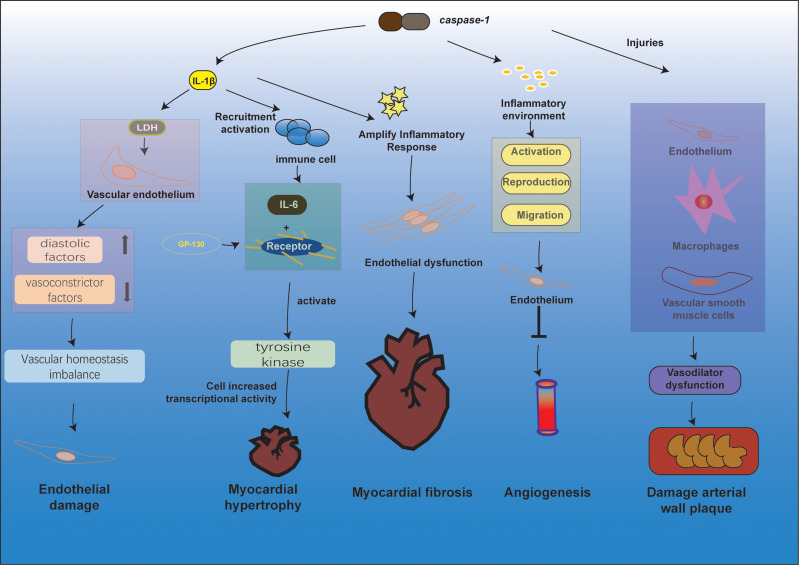Figure 2.
Pathological changes in the cardiovascular system through different pathways of pyroptosis. The release of IL-1β during anxiety is closely related to the release of LDH, and when the vascular endothelium is exposed to LDH and inflammatory substances, the release of diastolic factors decreases and vasoconstrictor factors increase, breaking the homeostasis of vascular homeostasis, leading to endothelial damage. In response to stimuli such as high blood lipids and oxidatively modified LDL, activation of Caspase-1 mediates the pyroptosis and inflammatory response of vascular endothelial cells, macrophages, and vascular smooth muscle cells, leading to vasodilatory dysfunction, formation of necrotic centers, stabilization of atherosclerotic plaques, and ultimately atherosclerosis. The inflammatory environment caused by inflammatory substances such as caspase-1 inhibits the activation, proliferation, and migration of endothelial cells and reduces angiogenesis. IL-1β and IL-18 produced by pyroptosis can recruit and activate other immune cells to induce the synthesis of the inflammatory factor IL-6, which acts as a ligand and, upon binding to the relevant receptor, causes the GP130 attached to it to form a homodimer, and tyrosine kinases are activated to promote increased cellular gene transcriptional activity. Activation of caspase-1 induces cellular pyroptosis and release of the pro-inflammatory factors IL-1β and IL-18 initiates amplification of the inflammatory cascade, leading to endothelial dysfunction, which in turn induces or adds to the development of myocardial fibrosis.

